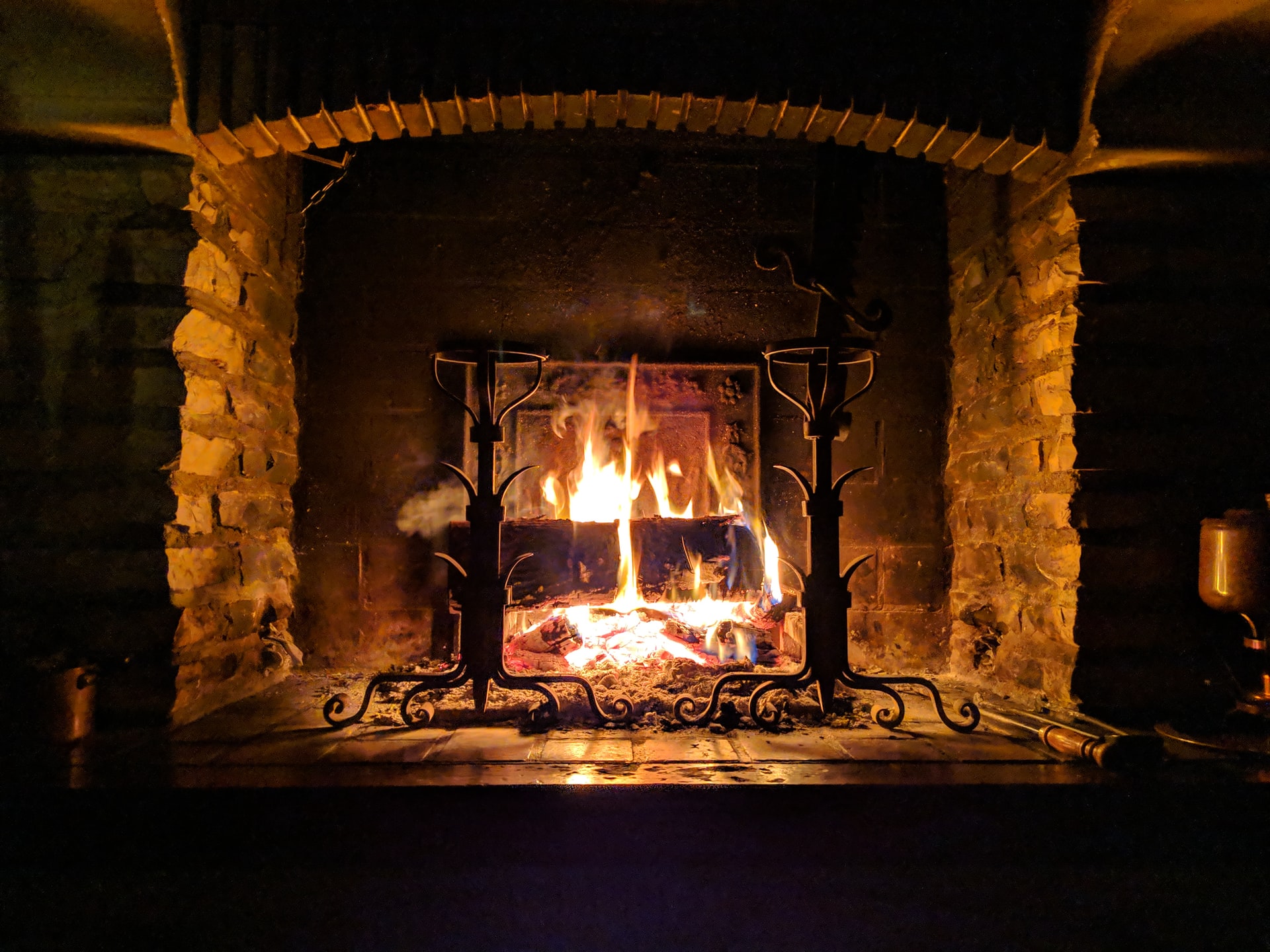Log cabins are naturally built for a good airflow that will help to keep a cabin cool. While this is great for warm weather, log cabins also have a strong appeal as a vacation spot in autumn and winter, when people tend to be a lot more preoccupied with staying warm. If you are building a cabin or planning on visiting a cabin in cooler seasons, then keep these tips in mind for keeping your cabin heated! As a side note, I will be referencing some items you can use to keep your cabin warm; I’ll try and include a link to affordable versions of each of these items as they come up.
Structural Design for Log Cabin Airflow
Before we begin, it’s helpful to understand just how log cabins are built. Given that every log cabin is built from timber, there is a natural airflow allowed by the spaces between the timber pieces. There are several advantages to this setup. Log cabins have a sort of inherent insulation that is designed to prevent moisture from slipping into the structure, which helps to ensure a longer lifespan of the cabin by preventing mildew, wood rot, and mold. While cabins do help to keep the space cool, there are also assets that help to keep it warm. This once again comes down to the timber building; as the sun is constantly hitting the logs, the logs will retain that heat, simultaneously retaining heat from any internal sources. As night falls, the temperature will drop, which causes the heat to leave log walls. Some of that heat does return to the interior of the cabin. The reason all of this is important is to help you understand that log cabins tend to keep a very stable temperature; it may be you only need to focus on extra heating in certain rooms or spaces.
Heating Tips for a Vacation
If you are visiting a log cabin for a vacation, there are obviously some limits as to what you can do to ensure the cabin stays heated, as you cannot make any structural changes. There are some very simple tactics you can use to keep a cabin heated. The first is to lock the windows of the cabin, which provides more of a seal on air flow to reduce leaks and drafts. Opening all the curtains and blinds can maximize the amount of sunlight entering the cabin. Even on a cold day, this can significantly aid in heating a cabin. However, if this is not quite enough for you, there are some things that you can bring along for your trip to help you heat up different rooms and spaces.
An easy option to bring along is a portable electric space heater. There are many different versions of electric space heaters, some of which are more like electric furnaces, but this model is by far the most portable and simple to use. These heaters can make a tremendous difference in the temperature of a room, so if you’re concerned about heating, these are an outstanding resource to use.
Another portable, effective item to bring along is a set of thermal curtains. Thermal curtains are a two-edged sword of sorts; their insulation is capable of both heating a room or helping to keep it cool, making it useful for any time of year. The insulation has other benefits as well; if you are somebody who likes to sleep in silence, the insulation helps to keep out outside noise. Additionally, the insulation can block out 90-99% of sunlight and UV light, which makes these curtains a perfect accessory for an afternoon nap or for sleeping in on your vacation.
Heating Tips for Cabin Owners
If you are someone who owns or lives in a log cabin, you have a bit more freedom in what you’re able to do to keep your cabin well-heated. In addition to previous options, you also have some structural or slightly different options from the above that will be more convenient to you. For instance, if you want a space heater that has a little more of a stylish look or that you can mount on a ceiling, those are available to you.
As far as structural changes go, there are a few other things you can consider. The first is to incorporate different types of windows that will help to heat your cabin better. Having larger glass panes increases the amount of sunlight coming into the cabin, thereby helping to heat it. You can also invest in gas-filled, which provides excellent insulation against outside weather. You can also use window glaze to receive their insulation and airtight benefits. There are several types of glaze, each with different effects, but you can start by just looking at a simple glaze like this to get an idea of how they function.
There are other options for heating as well. One such option is radiant heated flooring, which runs wires beneath the floor to keep it consistently warm. There are many ways to go about installing this, but I’ll link to the wires themselves to give you an idea of cost. Lastly, you can also install stand-alone heating units in specific spaces of your cabin so that those particular places receive additional heating. A pretty common and efficient stand-alone system is the direct-vent wall furnace. Direct-vent wall furnace caps install on the outside wall of your cabin and use outdoor air to support combustion without using your indoor heated air. This is accomplished by operating on a vent within a vent system to make sure not to draw on any of your indoor air.
In Closing
We hope all of these tips help you in your cabin plans. Once again, this list is not completely exhaustive, but it should provide you strong guidelines to follow and build upon. If you enjoyed this article, be sure to check out some of our additional content as well!

